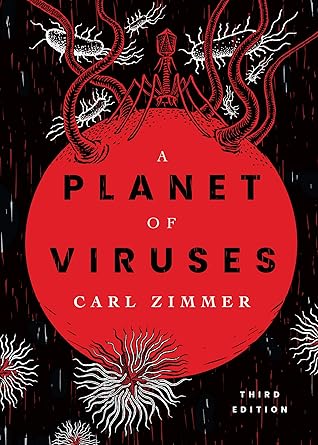More on this book
Community
Kindle Notes & Highlights
Much of the DNA was human, but many fragments came from viruses. Before Willner’s expedition, scientists had assumed the lungs of healthy people were sterile. Yet Willner discovered that, on average, people have 174 species of viruses in their lungs. Only 10 percent of the species Willner found bore any close kinship to any virus ever found before. The other 90 percent were as strange as anything lurking in the Cave of Crystals.
The very word virus began as a contradiction. We inherited the word from the Roman Empire, where it meant, at once, the venom of a snake or the semen of a man. Creation and destruction in one word. Over the centuries, virus took on another meaning: it signified any contagious substance that could spread disease. It might be a fluid, like the discharge from a sore. It might be a substance that traveled mysteriously through the air. It might even impregnate a piece of paper, spreading disease with the touch of a finger.
Around 3,500 years ago, an Egyptian physician sat down and wrote the oldest known medical text. Among the diseases he described was something called resh. Even with that strange-sounding name, its symptoms—a cough and a flowing of mucus from the nose—are immediately familiar to us all. Resh is the common cold.
In 1914, a German microbiologist named Walther Kruse gained the first solid clue about the origin of colds by having a snuffly assistant blow his nose. Kruse mixed the assistant’s mucus into a salt solution, poured it through a filter, and then put a few drops of the filtered fluid into the noses of 12 colleagues. Four of them came down with colds. Later, Kruse did the same thing to 36 students, and 15 of them got sick. While he ran this experiment Kruse also kept track of 35 people who didn’t get the drops. Only one of them came down with a cold on their own. Kruse’s experiments made it clear
...more
One of the most common ways that antibodies protect us from the flu is by latching on to the very tip of proteins that project from the surface of the viruses. The viruses use these tips to latch on to cells and invade them. Antibodies prevent them from gaining entry, a bit like putting a dab of gum on the end of a key so that it can no longer turn a lock.
In our own primate branch of the tree of life we can see the parallel tracks of virus and host evolution. About 40 million years ago, the ancestors of monkeys that live in Central and South America split off from the ancestors of monkeys and apes in Africa, Europe, and Asia. The papillomaviruses that infect living primates show the same split. Our papillomaviruses, for example, are more closely related to those of baboons in Kenya than those of howler monkeys in the Amazon.
Proctor’s figure far exceeded previous estimates. But when other scientists followed up on her work and carried out their own surveys, they ended up with similar figures. They found viruses lurking in deep-sea trenches and locked in Arctic sea ice. They came to agree there are somewhere in the neighborhood of 10,000,000,000,000,000,000,000,000,000,000 viruses in the ocean. It is hard to find a point of comparison to make sense of such a huge number. There are 100 billion times more viruses in the oceans than the grains of sand on all the world’s beaches. If you put the viruses of the oceans
...more
Thanks to gene borrowing, viruses may be responsible for a lot of the world’s oxygen. Much of the oxygen in the atmosphere is produced by photosynthetic microbes in the oceans. Some of the viruses that infect them carry their own genes for photosynthesis. When they invade, the viruses take charge of harvesting light. By one rough calculation, 10 percent of all the photosynthesis on Earth is carried out with virus genes. Breathe 10 times, and one of those breaths comes to you courtesy of a virus.
Heidmann and his colleagues compared the variants of the virus-like sequence. It was as if they found four copies of a play by Shakespeare transcribed by four careless clerks. Each clerk might make his own set of mistakes, and sometimes one of Shakespeare’s words ended up as four different misspelled versions—wheregore, sherefore, whorefore, wherefrom. By comparing all four versions, a historian could figure out that the original word was wherefore.
No one at the time knew why variolation worked, because nobody knew what viruses were or how our immune systems fought them. The treatment of smallpox moved forward mainly by trial and error. In the late 1700s, the British physician Edward Jenner invented a safer smallpox vaccine based on stories he heard about how milkmaids never got the disease. Cows can get infected with cowpox, a close relative of smallpox, and so Jenner wondered if it provided some protection. He took pus from the hand of a milkmaid named Sarah Nelmes and inoculated it into the arm of a boy. The boy developed a few small
...more


